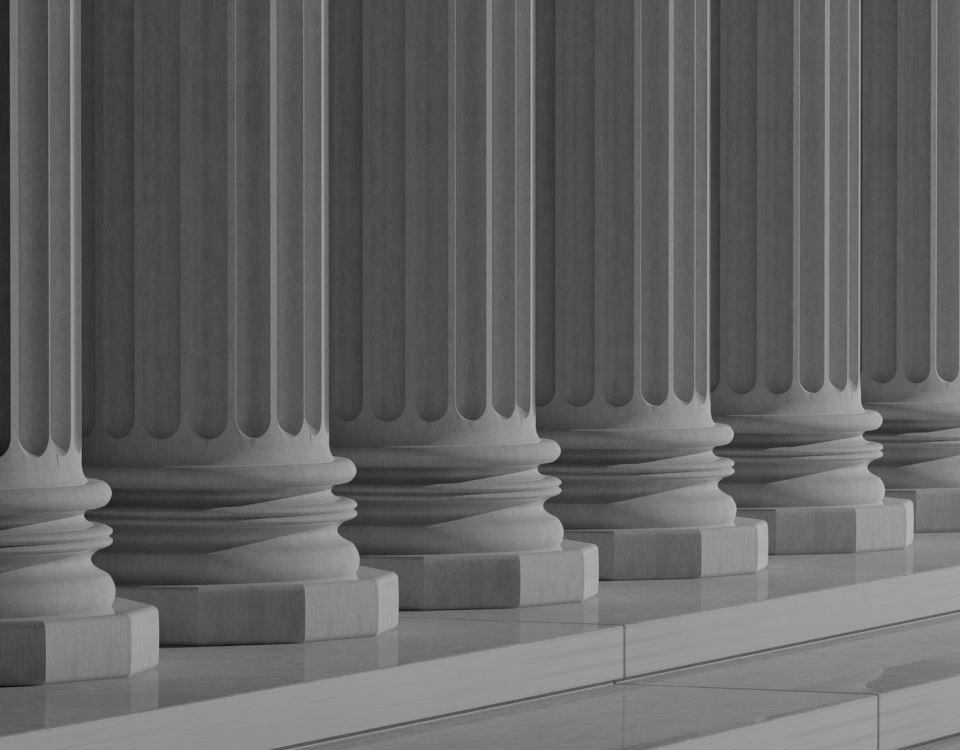
How difficult is it to appoint a Chief Military Judge?
May 7, 2020
Disingenuous Offers of ‘Informal Resolution’
May 27, 2020CDS-Imposed Limitations on Convening Courts Martial
Are our military judges truly independent?
It has been two months since the Chief Military Judge, Colonel Mario Dutil, retired from service in the armed forces raised by Her Majesty in Canada (aka the Canadian Forces). The Governor in Council still hasn’t named a successor.
While we’re waiting for the Governor in Council to treat the military justice system with the same respect that it treats the civilian criminal justice system, I thought it might be an ideal time to discuss an aspect of the Code of Service Discipline that impacts directly on the independence and impartiality of the military judiciary – namely, the direct influence that the CDS and other CF leadership personnel have on the convening of courts martial.
If you follow this Blog, you will be aware that the issue of judicial independence and impartiality of the military bench was recently the subject of at least two judgments at court martial: R v MCpl Pett, 2020 CM 4002, per Commander Pelletier, and R v Cpl D’Amico, 2020 CM 2002, per Commander Sukstorf.
In both of those cases, defence counsel challenged the jurisdiction of courts martial alleging that the independence and impartiality of the judiciary was compromised by an order, issued by the CDS, placing military judges under the disciplinary authority of the Deputy Vice Chief of the Defence Staff.
In both cases, Commander Pelletier and Commander Sukstorf dismissed the defence applications by finding that military judges are not subject to the Code of Service Discipline while they occupy judicial office. Both judges found that the Military Judges Inquiry Committee (MJIC) served as an alternate disciplinary regime which permitted them to conclude that the Code of Service Discipline did not apply to the military bench.
Again, if you follow my Blog, you will be aware that I found parts of these judgments problematic. As I explained here, the MJIC serves a distinct purpose from that of the Code of Service Discipline and, in my opinion, it is inaccurate to suggest that the MJIC process is an appropriate substitute for the Code of Service Discipline. It is very much an ‘apples and oranges’ comparison. Parliament clearly enacted the MJIC to serve a distinct purpose.
A second problem arising from these judgments was that neither judge had before him or her a Notice of Constitutional Question, making it problematic to review whether the statutory regime for the Code of Service Discipline impaired their independence and impartiality. Again, readers of my Blog will recall that I previously addressed the pitfalls of challenging the constitutionality of statutory provisions relating to the Code of Service Discipline when a Notice of Constitutional Question has not been brought.
Fortunately, it is my understanding that one of the intrepid advocates at Defence Counsel Services has recently filed a Notice of Constitutional Question addressing the issues that were discussed, tangentially, in MCpl Pett and Cpl D’Amico, so we may get a more fulsome review and answer of that issue.
But that purported application gives rise to a subsequent question: when will it be heard and under what circumstances?
Courts across Canada have been struggling with the ‘new reality’. (And if I may be permitted a brief editorial comment: I find that the phrases ‘new normal’ and ‘new reality’ to be increasingly over-used. At least there isn’t (yet) a meme involving Sean Bean – or, I hope there isn’t.)
Recently, I have had the opportunity to watch live streaming presentations by the Chief Justice of Ontario and the President of the Court of Appeal for Ontario, Chief Justice Strathy, and by the Chief Justice of the Ontario Superior Court of Justice, Chief Justice Morawetz, both organized by The Advocates’ Society. These informative presentations permitted the Chief Justices to describe some of the challenges facing their courts in light of restrictions arising under COVID-19. These restrictions range from practical and medical, to those imposed by government. However, these Chief Justices are still empowered to issue direction concerning the governance of their courts. Clearly, they do so in collaboration and consultation with other stakeholders and expert advisors. However, they retain governance over the management of their courts. This is vital to maintaining the independence and impartiality of the judiciary.
The ability of the courts to function within the emerging paradigm will, as it has in the past, be influenced by the resources available to the courts. However, steps are taken to ensure the maintenance of their independence and impartiality.
The Canadian Forces still does not have a new Chief Military Judge. Undoubtedly one day it will. Hopeful that decision won’t be delayed to the same extent as many grievances are. But there is a Deputy Chief Military Judge who, by function of section 165.29 of the National Defence Act, is the Acting Chief Military Judge. And the Acting Chief Military Judge has issued directives concerning the convening of courts martial. In fact, the Acting Chief Military Judge has issued three such directives, the most recent one being issued on 12 May 2020.
And this most recent directive drew my attention.
As with prior directives relating to the COVID-19 pandemic, the most recent directive acknowledges that courts martial will not be convened at present, and the most recent directive extends this suspension of normal court activities until 31 May 2020. And, we may well see further suspension of activity.
The directive provides detailed instructions concerning how courts martial will address preferral of charges and withdrawal of preferrals, as well as limited judicial hearings, including custody review and preliminary proceedings, and media access. Thus, the Notice of Constitutional Question that I mention above, may well be heard via Video Teleconference (VTC) as a preliminary proceeding.
But, when I reviewed this directive, something else drew my attention: paragraph 5, which begins:
Physical and social distancing and containment measures by federal and provincial public health authorities and the CDS [Chief of the Defence Staff] have temporarily made it impossible to hold a court martial because of the following factors:
…
That sets courts martial apart from civilian courts.
All civilian courts must, like courts martial, concern themselves with physical distancing and containment requirements by federal and provincial health authorities. While there is a compelling argument that courts are not bound by executive orders even during a pandemic, only a foolish Chief Justice would disregard well-reasoned medical advice from a health authority. However, the Acting Chief Military Judge’s directive includes a factor that civilian judges do not face: restrictions imposed by the CDS (meaning, non-regulatory restrictions imposed by a statutory actor who is part of the Executive).
We must remember that courts martial are not ‘standing courts’ (notwithstanding that there is a type of court martial called a ‘Standing Court Martial’). They are ad hoc courts, convened for, and as, individual proceedings (although they may have more than one accused). They are triggered when the Director of Military Prosecutions (DMP), or a lawyer serving under DMP’s supervision, prefers charges for court martial. Following a preferral, the Court Martial Administrator (CMA) then convenes a court martial.
But the manner in which these ad hoc courts are convened leaves them vulnerable to manipulation by the executive. These courts are reliant entirely on the support of the unit to which the accused is posted or other units tasked to support the court martial. The supporting unit provides the physical facilities for the court martial, including the military judge’s ‘chambers’, offices for prosecutor and defence counsel, witness rooms, and the court room itself. Court support staff is provided by the unit as well.
This reliance on supporting units can present challenges. For example, on more than one occasion, I have appeared as civilian defence counsel before a court martial convened in a building or area with EMCON (emissions control) restrictions. In common parlance, this means that, depending upon the level of EMCON restrictions, transmitting devices, such as mobile phones cannot be brought within those spaces.
Here’s the rub: Most lawyers rely on a laptop computer and/or mobile phone to perform their functions. In particular, when a civilian lawyer appears at a court martial, he or she will often appear in a city other than where they reside and normally work. In those circumstances, the lawyer will typically take a ‘portable office’ with him or her. If the court martial is conducted in a location with EMCON restrictions that prohibit the use of transmitting devices, the lawyer will be prevented from accessing the internet for legal research or communication. And it is of no assistance for the Officer of the Court to suggest that the counsel rely on the DWAN (Defence Wide Area Network) – as a civilian, the counsel would not have a DWAN account.
In my circumstances, thus far, I have managed to find solutions, as awkward and inconvenient as they have been. It is likely only a matter of time before I, or another civilian defence counsel, encounters an untenable circumstance. And, here’s the oddity: if I objected to the location where the CMA convened the court martial or the specific support (or lack of support) that I received, there would be no point in bringing an application before the presiding military judge. He or she would inform me that he or she would not have jurisdiction to consider such an application, and I would be obliged to bring an application before the Federal Court: R v MCpl Morton, 2017 CM 4008; Canadian Broadcasting Corporation (Radio-canada) v Canada (Attorney General), 2016 FC 933.
One of the reasons that courts martial cannot be convened is because of orders that the CDS has issued. Even if circumstances evolve to the point that courts martial might again be convened, the Acting Chief Military Judge (assuming that the Governor in Council has still not appointed a new Chief Military Judge by that point in time) would still not be able to direct the CMA to again convene courts martial. He would be obliged to wait for the CDS to permit him to do so.
That raises a valid concern about independence of the military judiciary.
The convening of courts martial was a central issue in the pivotal case of R v Généreux, [1992] 1 SCR 259. Généreux is most often cited for the proposition that a separate, parallel system of ‘military justice’ (the Code of Service Discipline) is consistent with the Canadian Charter of Rights and Freedoms (Charter). In fact, it is cited so frequently that I, for one, tire of the repeated reliance on this 30-year old case, which, in many ways, has been overcome by more recent judgments.
The frequency upon which it is relied for the above-noted principle can cause some to forget other important aspects of this case. The central issue in Généreux was the manner in which courts martial were convened. And on that issue, the Crown failed in the appeal. The Supreme Court of Canada ordered a new trial because the accused’s right to trial by an independent and impartial tribunal was infringed. The Court cited three factors, including lack of security of tenure of the judge advocates presiding as military judges, and the lack of financial security. A third factor was that the ad hoc court martial (in that case, a General Court Martial) was convened by a senior officer in the chain of command.
Généreux gave rise to changes to courts martial enshrined in the significant amendments to the NDA in 1998. For example, military judges were appointed to that role for a set period of time, rather than being drawn from among legal officers on an ad hoc basis. Nevertheless, the 5-year appointment of military judges, requiring reappointment at the executive’s discretion, was subsequently successfully challenged: R v Leblanc, 2011 CMAC 2. This led to further statutory reform of the Code of Service Discipline.
Similarly, the fact that the accused brought before a court martial was not permitted to elect the type of court martial was the subject of a Charter application and Notice of Constitutional Question: R v Trepanier, 2008 CMAC 3. In comparison, an accused brought before a civilian court of criminal jurisdiction for an indictable offence has the right (with certain caveats) to elect whether to be tried by judge and jury or judge alone. This Charter challenge was also successful and also led to further statutory reform of the Code of Service Discipline.
If you are starting to get the idea that statutory reform typically arises only when the CF and the government are forced to do so by successful challenges by defence counsel, they you are probably developing a perspective similar to my own. The sad circumstance of the Code of Service Discipline is that reform is typically brought in a reactive manner, rather than an anticipatory fashion. The flaws in the process are typically corrected only when the ‘powers that be’ are forced to fix them, rather than when someone points out the flaws in, say, scholarship.
But the pertinent issue for our discussion today is that, following Généreux and the legislative reform that it precipitated, courts martial were no longer convened by an officer commanding a command. The new process was as follows: (i) an officer or NCM of the CF is charged under the Code of Service Discipline; (ii) if one or more offences could only be tried by court martial, if the commanding officer was of the view that the matter should be tried by court martial, or if the accused elected to be tried by courts martial, the charges would be sent to a referral authority – an officer commanding a command or an officer with the powers of an officer commanding a command; (iii) the referral authority would then refer the charges to DMP, unless there was a lawful reason to refer the charge(s) back to the CO; (iv) DMP (or an officer under his supervision) would either prefer the charges for court martial, or not; and (v) upon receipt of the preferred charges, CMA, who serves under the direction of the Chief Military Judge, convenes the court martial. There more details for each step in the process, but that is the general idea.
Frankly, soldiers might be forgiven for viewing these procedural changes as little more than ‘smoke and mirrors’. After all, the chain of command is still involved in the process and, although there is some opportunity for the exercise of discretion by certain statutory actors, most of the decisions can be viewed as ‘foregone conclusions’. Frankly, the most likely point in the process for the exercise of discretion is by DMP. DMP is not obliged to prefer the charges that are referred to him, and, on a not-infrequent basis, prosecutors prefer different or additional charges. Sometimes they choose not to prefer charges. Sometimes the reasons for these ‘non-preferrals’ are not clear to the accused. Sometimes the reasons seem particularly odd. In any event, based upon the ‘new’ process, there is a degree of separation between the chain of command and the convening of courts martial. Certainly, the current military judges have been quite clear that, in their view, they don’t take marching orders from the CDS.
But is that necessarily always the case?
Despite the supposed ‘overhaul’ of the court martial process, they remain ad hoc courts. In 2009, two colleagues with the Office of the JAG, Jason Samson and Mike Madden, co-authored “Entrench the Bench – Canada’s Pressing Need for a Permanent Military Court” (2009) 55 : 1 & 2 Crim LQ 215, building upon commentary by David McNairn in “Does Canada Need a Permanent Military Court?” (2006), 18 N J C L 205. They presented cogent arguments supporting the creation of a permanent or standing court.
Consider this: courts martial were the subject of significant changes in the 1998 amendment of the NDA. At the same time, two new ‘players’ in the military justice system were created. (And readers of this Blog will know that I apply a more expansive definition of ‘military justice’ than does the Judge Advocate General and the rather disingenuous statutory definition of ‘military justice’ introduced by Bill C-77, which has yet to come into force.) The Military Grievances External Review Committee (MGERC), initially created as the Canadian Forces Grievance Board (CFGB), and the Military Police Complaints Commission (MPCC) were created based upon recommendations from various external studies in the 1990s.
There is a fair bit of discussion about the roles and status of these two organizations. Some of it is generated by the organizations themselves. Some of the commentary presents an accurate description of their roles and functions; some less so.
Here’s my general view of both of these organizations. They are statutory bodies that would fall within the definition under the Federal Courts Act of a “… federal board, commission, or other tribunal …”. But they are not adjudicative tribunals; they provide non-binding findings and recommendations to the actual decision-maker. They also have the power to convene hearings, to administer oaths, and to receive evidence under oath. They do not, however, use these powers frequently.
In particular, both of these bodies proclaim to be independent. And it is that assertion that is relevant to our discussion here. Whenever anyone asserts that they are ‘independent’, I typically have two questions: From whom? And, to what extent?
Neither the Chairperson of the MPCC nor the Chairperson (or Vice-Chairperson, or Members) of the MGERC possesses judicial independence. Nor, frankly, are they expected to possess such independence. After all, they are not adjudicative tribunals. They do not have the security of tenure of judges. They do not have the same security of remuneration. They are Governor-in-Council (GiC) appointees, just like any other non-judicial GiC appointee. They are still part of the executive branch of government.
And, although various Chairpersons for the MGERC and MPCC have insinuated in the past that they “… report to Parliament …”, they don’t; not really. By virtue of section 29.28 of the NDA, the Chairperson of the MGERC is obliged to provide the Minister of National Defence with an annual report, and the Minister is obliged to table the report before Parliament. The same is true for the Chairperson of the MPCC under section 250.17 of the NDA. The Chairpersons report to the Minister, and the Minister reports to Parliament, as would be expected in a constitutional representative parliamentary democracy.
Arguably, the most accurate description of these two bodies is that they are a statutory committee and commission that are arm’s length from the Canadian Forces. They possess a degree of institutional independence.
Military judges are independent in a way that the MGERC and the MPCC are not. Granted, it took us a couple of decades after the legislative reforms of 1998 to get to this point, but military judges have many of the hallmarks of judicial independence. They have security of tenure. Now, they are appointed until they reach the compulsory retirement age of 60 (15 years lower than the compulsory retirement age of civilian judges). They no longer have to seek reappointment after five years. They have financial independence. The NDA provides for a quadrennial review of their remuneration, much like the quadrennial review for other federally appointed judges. Why there has to be a separate and expensive quadrennial review for four military judges, rather than including that process in the larger quadrennial review conducted for all other federally-appointed judges is baffling to me, but Parliament, in its wisdom, has decided that it is appropriate to spend those scarce resources separately for the small pool of military judges. And, military judges are purportedly part of the judicial branch of government, not the executive. Mostly. Sort of. And that’s where the current problem arises.
Security of tenure and of remuneration are hallmarks of independence from which the MGERC and MPCC do not benefit. Again, when someone asserts that they are independent, I feel obliged to ask: From whom, and to what extent?
But here is what I find interesting when I compare the MGERC and the MPCC to the military bench, and this observation arises from those two questions that I ask.
One hallmark of independence that the MGERC and the MPCC possess which, arguably, the military bench does not – at least, not to the same extent – is institutional independence. Or, perhaps more accurately, aspects of institutional independence.
As I mention above, the MGERC and MPCC are part of the executive. That’s incontrovertible. However, in some ways they can be said to be at further arm’s length from other elements of the executive in the area of National Defence than the military bench. The MGERC and MPCC are granted greater budgetary management under the Financial Administration Act than the Chief Military Judge. (And, as an aside, there are actual Chairpersons for the MGERC and the MPCC, and not Acting Chairpersons.) More particularly, they are not subject to disciplinary supervision by the CDS (or the Deputy Vice Chief of the Defence Staff). They are not dependent upon the CDS’s direction to convene hearings on those rare occasions when they actually convene hearings. Arguably, they have greater control over their processes than do military judges. And military judges are, at law, supposedly more independent than the MGERC or MPCC.
Certainly, there is a suggestion in the Acting Chief Military Judge’s most recent directive that courts martial remain at the mercy of executive decision-making. This can potentially undermine the independence of the military bench. And I would be extremely surprised if this issue does not arise the argument presented in the anticipated Notice of Constitutional Question.
I suggest that the COVID-19 pandemic presents a valuable opportunity to revisit the issue of the independence of the military judiciary and, in particular, the suggestions offered by Mike Madden and Jason Samson.
And, as I indicate above, beneficial reform of the Code of Service Discipline often arises not from forward-thinking, anticipatory consideration of how the processes can be improved, but by the dogged efforts of industrious defence counsel who force military courts to scrutinize legislative shortcomings. When they are successful in doing so, the judgments of those same military judges – who may or may not be sufficiently independent – and the judges of appeal in the Court Martial Appeal Court of Canada, are vehicles by which true reform will arise.




